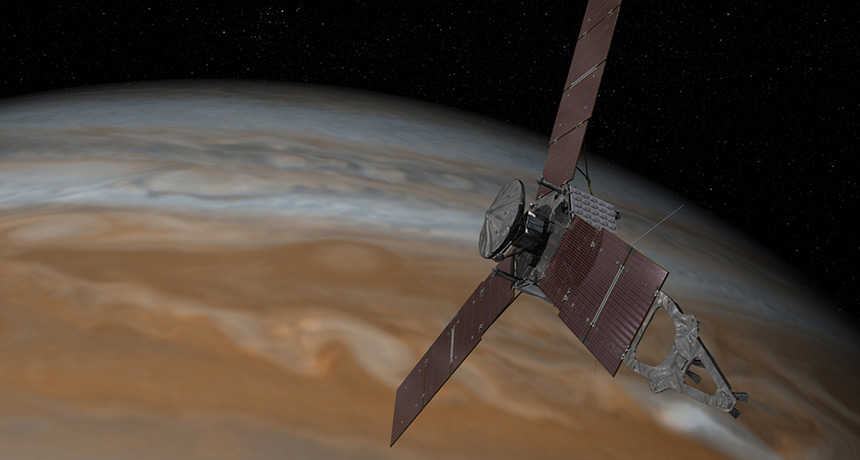Juno spacecraft goes into ‘safe mode,’ continues to orbit Jupiter

PASADENA, Calif. — NASA’s Juno spacecraft, in orbit around Jupiter since July 4, is lying low after entering an unexpected “safe mode” early on October 19. A misbehaving valve in the fuel system, not necessarily related to the safe mode, has also led to a delay in a planned engine burn that would have shortened the probe’s orbit.
Juno turned off its science instruments and some other nonessential components this morning at 1:47 a.m. EDT after computers detected some unexpected situation, mission head Scott Bolton reported at an October 19 news conference. The spacecraft was hurtling toward its second close approach to the planet, soaring about 5,000 kilometers from the cloud tops. It has now passed that point and is moving back away from the planet with all science instruments switched off.
The rocket firing was intended to take Juno from a 53.5-day orbit to a 14-day orbit. Juno can stay in its current orbit indefinitely without any impact on the science goals, Bolton said. The goal of the mission — to peer deep beneath Jupiter’s clouds — depends on the close approaches that it makes with every orbit, not how quickly it loops around. “We changed to a 14-day orbit primarily because we wanted the science faster,” he said. “But there’s no requirement to do that.”
For now, mission scientists are trying to figure what happened with the fuel valve and what triggered the safe mode before proceeding with further instructions to the probe.